This may be Wine Country but the green beer will be flowing on March 17. Click through the above gallery to find out where to party like the Irish this St. Patrick’s Day.
How to Celebrate St. Patrick’s Day in Sonoma County


This may be Wine Country but the green beer will be flowing on March 17. Click through the above gallery to find out where to party like the Irish this St. Patrick’s Day.

Stunning vineyard views and sweeping coastal vistas aren’t difficult to find in Sonoma County, but dining much above ground level is a rarity due in large part to building height restrictions in our bucolic retreat.
But there are two places you can savor a meal while aloft — at the new Montage Resort’s Olive Terrace and at the Rooftop Bar at Harmon Guest House.
Stepping onto the Montage Resort’s sweeping patio perched high above the Alexander Valley is a jaw-dropping, showstopping adventure that requires at least one oooh and ahhhh no matter how fancy you are.
Overlooking hundreds of acres of undeveloped land, the ultra-luxury resort’s Olive Terrace is every bit the ultimate Wine Country destination, with fire pits and cozy rocking chairs and high-topped bar tables, but also with a multimillion-dollar treetop view. You’re in rarefied air here.
Hazel Hill, which remains closed to indoor diners, also has a cantilevered dining room to enjoy later. But for now, you can experience the high-end restaurant for breakfast, lunch and dinner or the more casual Scout Field Bar for cocktails from mixologist Scott Beattie and a quick bite.
Lunch or evening cocktails are best bets for a meetup with friends you’ve only seen Zoom for the past year.
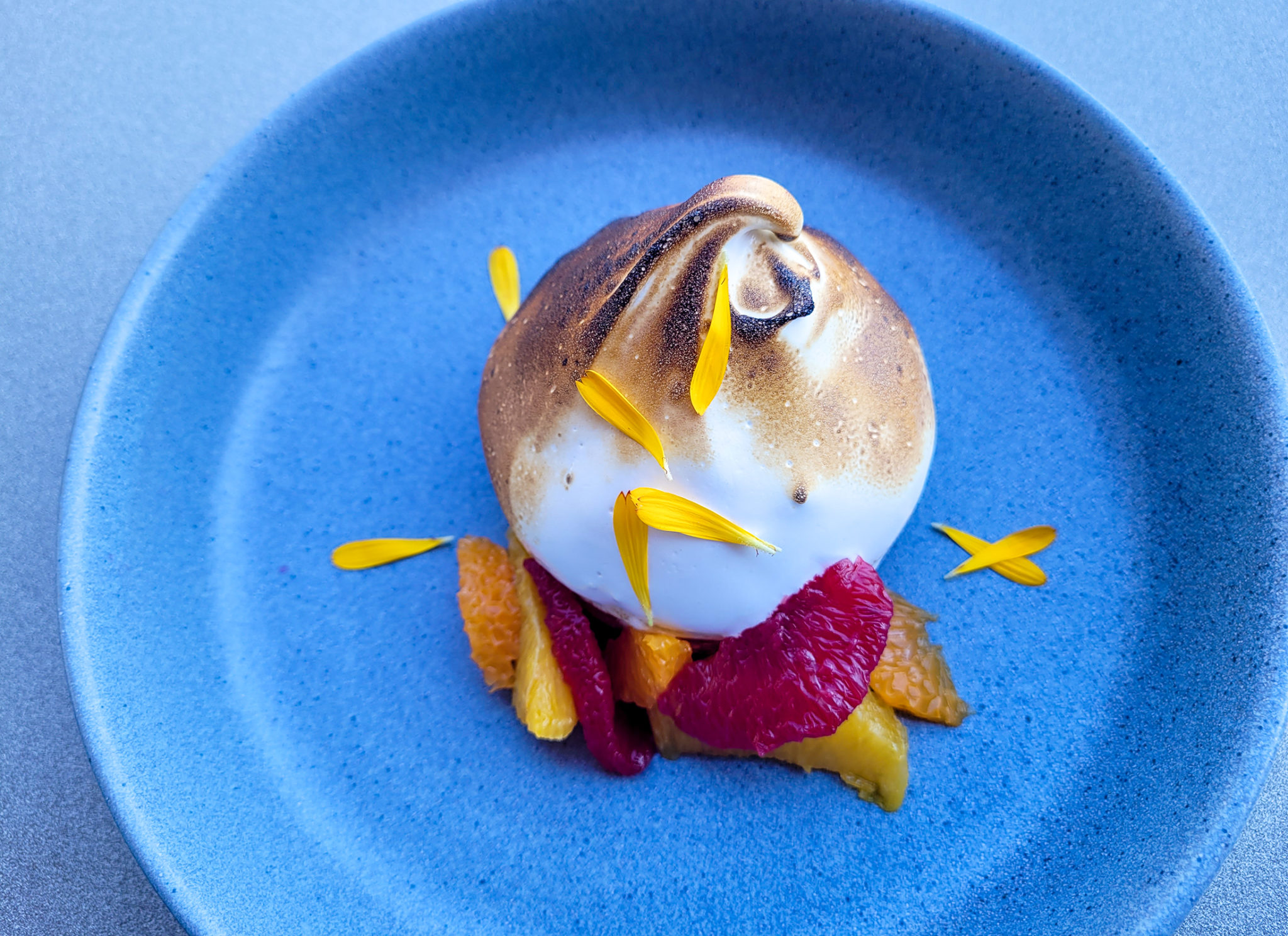
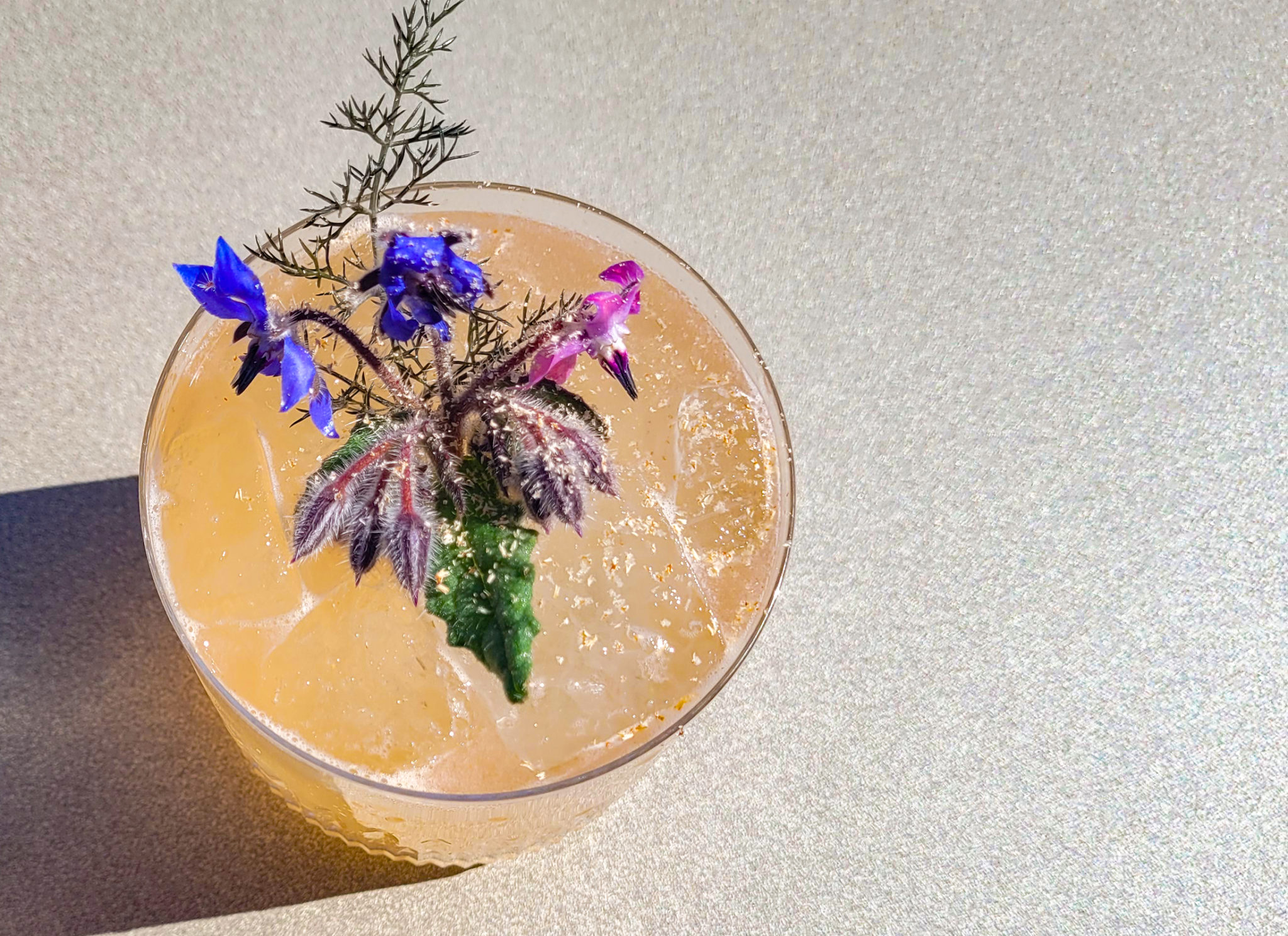
French Onion En Croute, $18: Sherry (along with beef broth) is the magic ingredient so often missing in ho-hum onion soup. Plenty of caramelized onions, not so much Gruyere as to become a choke-hazard and a lovely raft of a crouton.
Journeyman Charcuterie, $20: Healdsburg’s own aged meats with pickled olives and mustard. The bonus add-on is warm bread.
Heirloom Carrots, $16: Sturdy but not crunchy is the true measure of good carrots. Dressed with horseradish, mâche, buckwheat and coconut yogurt, they’re close-up ready.
Wagyu Beef Tartare, $22 (Hazel Hill): The best dish we tried. Beautiful bits of raw Wagyu beef with garlic chips and bone marrow toast.
Fern Canyon, $18: If you’re a whiskey fan, don’t miss this very grown-up cocktail with Suntory Toki Japanese Whiskey, Campari, Vya Sweet Vermouth, Tiki Bitters — and if you’re lucky — a twist of fresh yuzu from Scott Beattie’s yard.
Fusilli “Bolognese,” $24: The menu includes plenty of vegan and gluten-free dishes. But this vegetarian version of a a much-loved meat dish is infused with too much basil and nutritional yeast.
Hazel Hill and Scout Field Bar are open to the public, but reservations are highly suggested. And I’m suggesting you not arrive looking shlumpy. Also clean out your car because some poor valet is going to have to park it. 100 Montage Way, Healdsburg, 707-979-9000, montagehotels.com/healdsburg
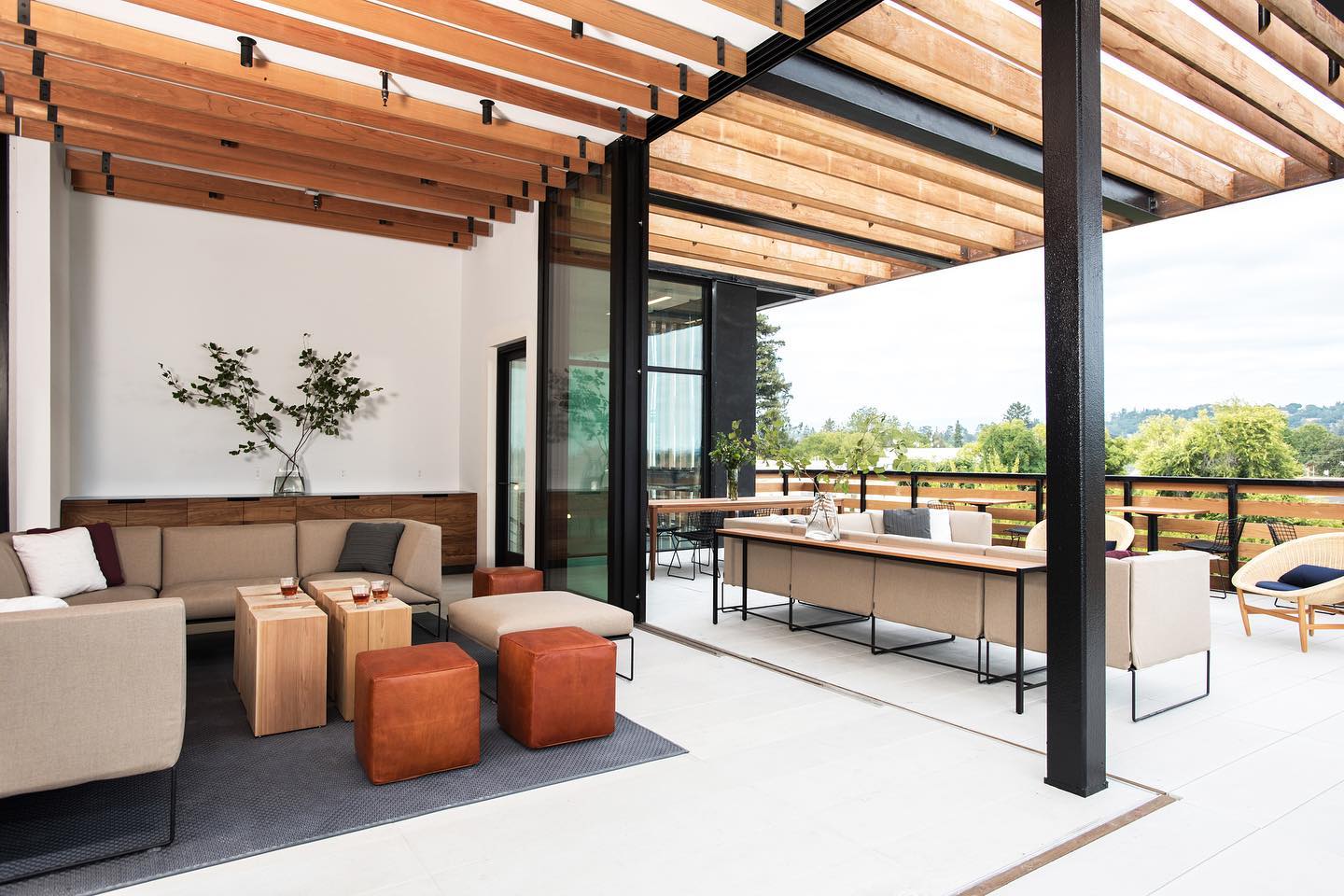
Four stories above downtown Healdsburg, the Rooftop Bar is one of those perfect spots with just a handful of tables, ridiculously good cocktails and a curated list of dishes overseen by Thomas Mulligan and Francisco “Poncho” Alverez, both alums of sister restaurants Spoonbar and Barndiva.
Housed in the newish Harmon Guest House, it’s an intimate space with a view of Fitch Mountain and the goings-on below. A warm fire pit and table-side heaters keep things cozy as the sun sets. The rooftop is open 3 – 8 p.m. Monday through Friday and 1 – 8 p.m. Saturday and Sunday. It’s first come, first served and no reservations are taken. Insider tip: Monday night is $1 oyster night.
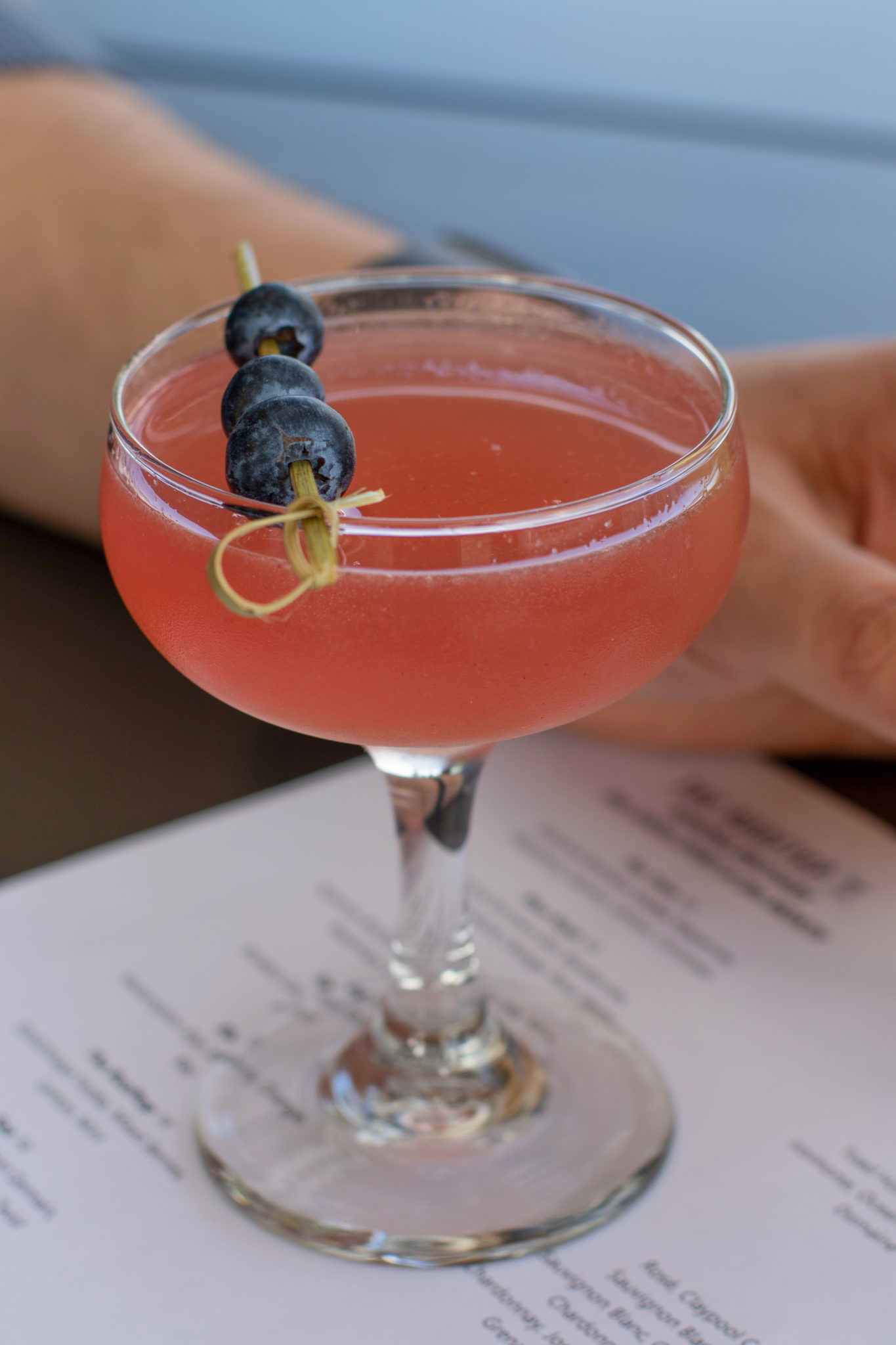
Shishito Peppers, $12: Enough for a crowd, these charred, finger-length peppers are rarely hot. Lemon aioli and smoked dashi ponzu add bright flavor, accented by brine-y wisps of bonito flakes.
Warm Crab Roll, $28: Stuffed with Dungeness crab and hugged by a soft brioche roll, this is an excellent (if slightly petite) must-have before the season ends. Light basil pesto adds to, rather than overpowers, the sweet fresh crab meat. Served with shoestring fries.
Lobster Arancini, $18: Fried balls of generous chunks of lobster and creamy risotto.
Rooftop Taco, $8: A little steep for a taco, but the beer-battered sole is light and flaky, and creamy chipotle cabbage brings it all together.
Cocktails range simple to over-the-top, but we were most impressed by the Herbal ($14) with Sonoma Brothers rye, genmaicha tea, mint, lime and rosemary thyme syrup. A total summer sipper. Also try the Blue Rose, with gin, blueberries, a tart shrub and rose water. Aromatic and lovely. General Manager Ryan Birrer has selected a fascinating list of small-production wines.
Harmon Guest House’s Rooftop Bar, 227 Healdsburg Ave., Healdsburg, 707-431-8220, harmonguesthouse.com

When Dungeness crab season rolls around, we’re game for every kind we can get our hands on. Most recently we found the Crabby Boi ($21) at the Subhuman Sandwich Shop pop-up at Jam’s Joy Bungalow in Sebastopol. It’s a mess of sweet picked crab with just a hint of sesame oil (who knew that was such a great match?), earthy pea shoots and a light grapefruit turmeric vinaigrette on a toasted potato roll.
Expensive? Yes. But worth it. Like August tomatoes or June strawberries, it’s a once-a-year treat worth seeking out.
Our other favorite at Subhuman is the slightly intimidating missile of a sub, the Chicken Parm Vodka Bomb ($16), with a crisp breaded cutlet, creamy vodka sauce, creamy burrata oozing from the bun and spicy arugula.
This week’s inaugural event sold out quickly, but watch for more sightings on Instagram at @subhumansandwichshop or Jams Joy Bungalow on Facebook.
Congrats to Chef Liza Hinman of Spinster Sisters for inclusion in “A Place At The Table,” a stunning (and free) virtual cookbook from fellows of the James Beard Foundation’s Women’s Entrepreneurial Leadership Program. Download it at jamesbeard.org/blog/a-place-at-the-table. Hinman’s recipe for asparagus salad with whipped ricotta and pistachio vinaigrette had us drooling for this lovely seasonal salad. Hopefully when the restaurant reopens we’ll be able to taste it in person.

Does Guy Fieri ever sleep? After raising millions for restaurant worker relief, feeding local first responders, filming local episodes of Diners, Drive-Ins and Diners, saving a historic butcher shop from closing, and, ya know, launching a new Food Network cooking competition show this month, he’s also heading up a nationwide chain of ghost kitchens.
Flavortown Kitchen is a delivery-only comfort food concept operating out of existing restaurants. Featuring a lineup of fried, cheesy and saucy dishes like Jalapeno Pig Poppers, Cheesesteak Egg Rolls, Buffalo Wings, burgers (with Donkey sauce, natch), his Chicken Guy! fried chicken sandwiches (oh yeah, that’s another business), chicken Alfredo, mac and cheese, fried pickles and cheesecake topped with potato chips, pretzels, and fudge sauce, it’s heartburn-inducing just thinking about it.
The ghost kitchen concept — running a virtual restaurant that’s delivery-only — has been a popular pandemic business concept that eschews the brick and mortar for a shared commercial kitchen that can do any type of cuisine.
Here’s the catch: No news of a Flavortown Kitchen in Sonoma County at this point. Many of the “borrowed” kitchens are at chains like Bucco di Beppo. But hey, Guy, we hear Tex Wasabi’s is still available…
More detiails at guysflavortownkitchen.com.

Many wineries release new vintages in spring, so it’s a great time to visit one of these local spots. Given current public health considerations, you should always call ahead to make tasting reservations, but don’t let that slow you down, as same-day appointments are often available.
The Benziger family migrated from New York state more than 40 years ago, focused on growing and producing premium wines in a prime spot on the shoulder of Sonoma Mountain in Glen Ellen, near Jack London State Historic Park. The Benzigers began farming with conventional techniques but by 1995 had switched over entirely to biodynamic practices.
The Benzigers use creative crop rotation and composting, along with natural minerals and herbs, to maintain vineyards that are healthy and chemical free. The estate was officially certified as a biodynamic farm 20 years ago.
Outdoor seated tastings ($30) last about 45 minutes and draw selections from across the winery’s portfolio. A 90-minute private estate tour and tasting ($60) includes an in-depth exploration of the biodynamic farm practices. The family is known for its Pinot Noir, Cabernet Sauvignon, Chardonnay, Sauvignon Blanc, and a large selection of red blends. A new release, the 2020 North Coast Rosé, will likely be on the tasting menu this month, or might be offered as a special splash, says senior marketing manager Carley Burns. “This wine is crisp and well balanced, bursting with fragrant citrus blossom aromas and delicate strawberry essence, reminiscent of warm summer days.”
Benziger Family Winery picked up gold medals for three different Pinot Noir selections at the Press Democrat’s 2020 North Coast Wine Challenge, together with a gold for the Joaquin’s Inferno red blend.
1883 London Ranch Rd., Glen Ellen, 707-935-3000, benziger.com By appointment only; reservations available online.
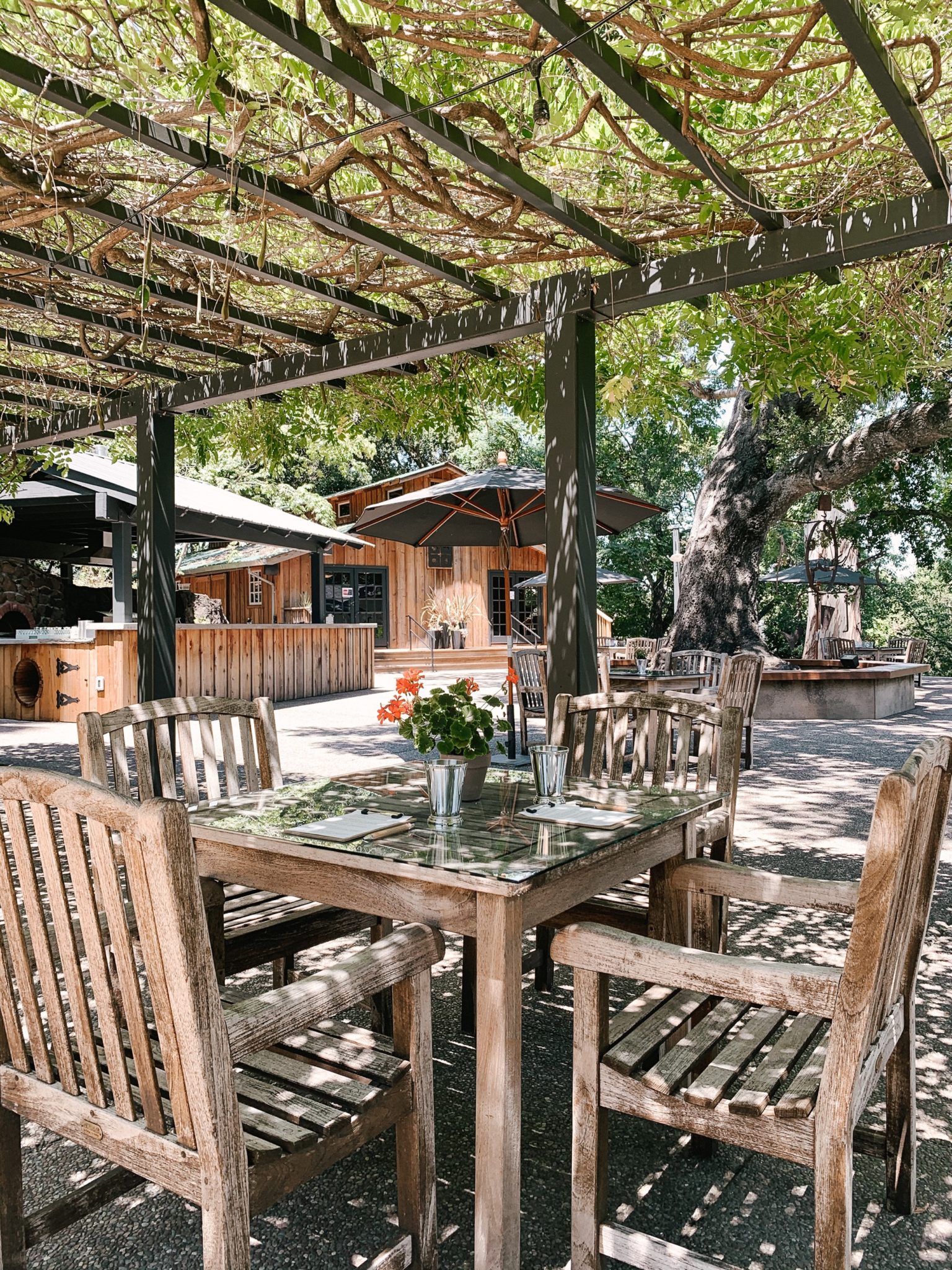
The Rafanelli family, with a rich history in winemaking that goes back four generations, bottle Zinfandel, Cabernet Sauvignon, and Merlot. This has always been a by-appointment-only destination, primarily because their sought-after wines are produced in limited quantities. Here you’ll have the full attention of the host: just one seated tasting is offered at a time in a stunning garden setting with views, and costs $75 for a table of up to six guests (waived with purchase). Two to four people is prime for a more intimate experience, says winemaker Rashell (Shelly) Rafanelli. “Most of the time your one-on-one host will be a member of our family, and you can ask for as much or as little wine education as you like during your visit. This method of welcoming our tasting guests one party at a time was so popular in 2020 that we plan to continue it this year.”
4685 W. Dry Creek Road, Healdsburg, 707-433-1385, arafanelliwinery.com.
Noah and Kelly Dorrance, the team behind Reeve Wines, launched this new label to spotlight high-quality Sonoma-grown-only Pinot Noir and Chardonnay. According to owner Kelly, there’s one flight currently on the tasting menu at $25, featuring Blanc de Gris, Rosé of Pinot Noir, Chardonnay, Pinot Noir, Carignan, and Cabernet Sauvignon.
“We are planning to revamp our food program,” she says, “but for now we’re offering spiced nuts with this flight that are made by SingleThread Restaurant, across the street.”
118 North St., Healdsburg, 707-387-7058, bloodrootwines. com.
Outdoor spaces at this winery are some of the most scenic in Sonoma Valley, showcasing rolling vineyards and more than 400 heritage olive trees. A tasting for two ($35 per pair) features a flight of wines served by carafe; wines by the glass are also offered (starting at $10). B.R. Cohn produces an extensive collection of whites and reds, including award-winning Russian River Valley Chardonnay, together with Cabernet Sauvignon, Cabernet Franc, and a Malbec — all created from grapes grown in the winery’s Olive Hill Estate vineyards.
15000 Sonoma Highway, Glen Ellen, 707-938-4064, brcohn.com.
The focus is on sparkling wine, a passion shared by the three sisters who founded the label. They offer three different tastings, all $20: a flight of four sparklers, a mixed flight of sparkling and still wines, and a flight of the stills, and if you choose, caviar to accompany your wines for an additional cost.
New releases this month include the winery’s still wines –– Chardonnay, Pinot Noir, and rosé. “The rosé is very Provence in style, and all the wines are done in the French style,” says tasting room manager Christine Cureton. “But the rosé really exudes ‘French’ to me.” Breathless won many gold medals in 2020 in competitions including the Sunset International Wine Competition, the North Coast Wine Challenge, and the Sonoma County Harvest Fair.
499 Moore Lane, Healdsburg, 707-395-7300, breathlesswines.com.
Jordan embraces the warm spring weather when it reopens to guests for the first time since November with a series of vineyard hikes during Earth Week ($110, April 22 to 25). Tickets go on sale April 7. A four-mile trek winds through the 1,200-acre estate that encompasses woods, meadows, olive orchards, new pollinator sanctuaries and vineyards. The hikes conclude with a lunch on the terrace, featuring greens, vegetables and foraged flowers from the estate, along with tastings of the winery’s cuvée sparkler, Chardonnay, and Cabernet Sauvignon. “While new vintages won’t be released until August, we are still pouring our 40th-anniversary vintage of Cabernet Sauvignon [2016], our 2018 Chardonnay, and the Jordan Cuvée Champagne by AR Lenoble,” says communications director Lisa Mattson. Spring vineyard hikes will also be hosted on May 7 and 8.
1474 Alexander Valley Road, Healdsburg, 800-654-1213, jordanwinery.com.
A 90-minute private walking tour and seated tasting called the Alfresco Estate Visit ($40) is offered on weekends at this winery in the heart of the Petaluma Gap AVA, known for cool climate vineyards that produce exceptional Chardonnay, Pinot Noir, Pinot Gris, and Syrah. “Our lineup of wines rotates, as our production is small,” explains hospitality manager Steven Harlor. “Our Pinot Gris should grace the tasting menu this month — until we release our rosé in late spring. We’ll also pour some of our flagship Chardonnays and Pinots, for which we are best known.”
5875 Lakeville Highway, Petaluma, 707-765-2117, kellerestate.com.
Several roomy outdoor spaces on this property make tasting a special occasion. At one time, the restored main barn was the home of renowned grapegrowers, the late Richard and Saralee Kunde.
Chardonnay and Pinot Noir are the stars at La Crema, with fruit sourced locally and from Monterey County. La Crema offers seated tastings ($30 for five wines), along with a guided walking tour and tasting ($75). Or, buy a bottle of wine from the tasting room and reserve one of the outdoor picnic tables ($50 per table); a formal tasting will not be conducted, but you’re welcome to bring your own food.
3575 Slusser Road, Windsor, 707-525-6200, lacrema.com.
Landmark is popular for its spacious courtyard area, which offers lovely views of the surrounding hills. It’s the ideal setting to enjoy single-vineyard Chardonnays
and Pinot Noirs. (signature tasting, $35). The reserve tasting ($70) is offered three times daily, with selections from the single-vineyard Chardonnays and Pinots, along with a Bordeaux blend made by Landmark’s sister winery, Justin Vineyards & Winery in Paso Robles. “That extra taste of the Justin is something to draw visitors in to our special reserve tasting,” explains hospitality and tasting room manager Donna Carroll. “It’s the last pour of that flight, which also includes a cheese plate.”
101 Adobe Canyon Road, Kenwood, 707-833-0053, landmarkwine.com.
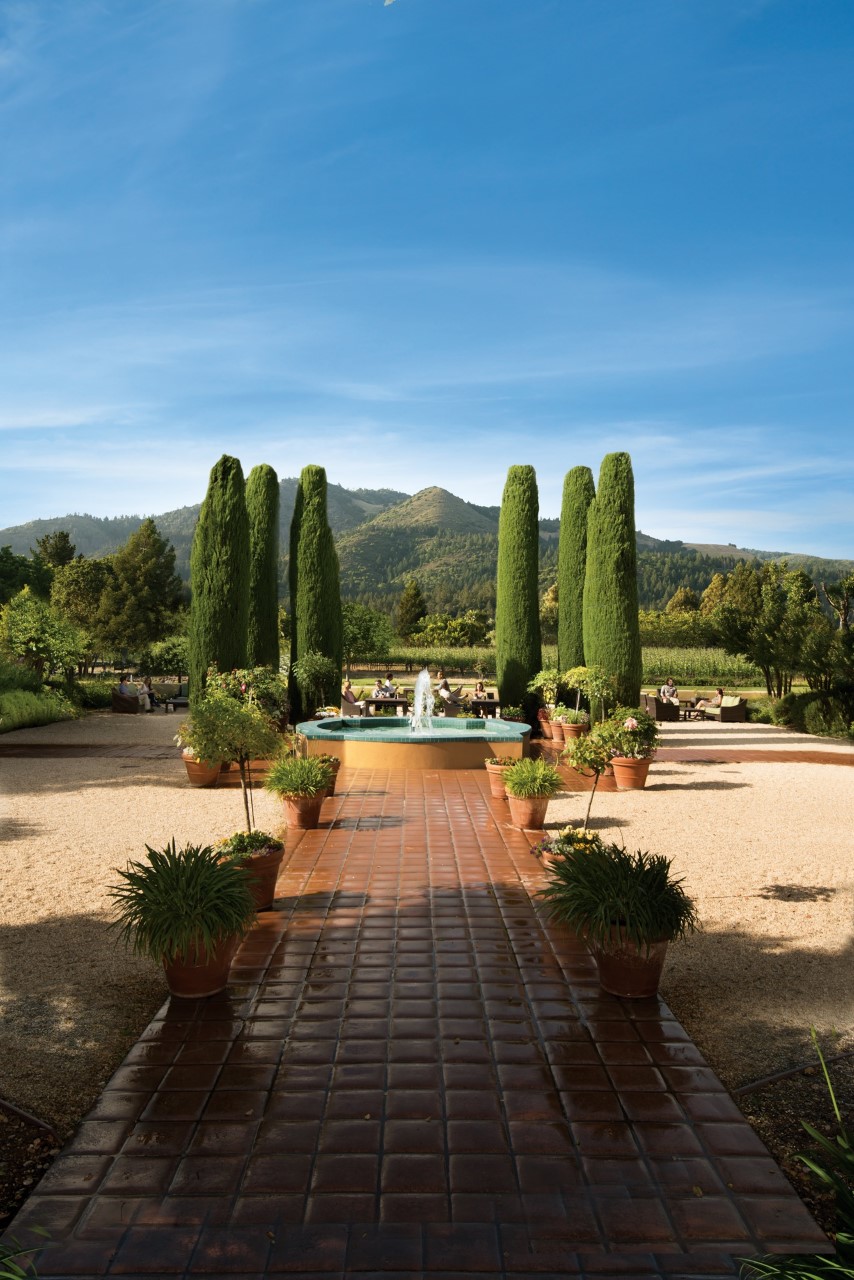
With a tasting room overlooking Dry Creek Valley, Papapietro Perry was created by Ben and Yolanda Papapietro and Bruce and Renae Perry. Zinfandel and Chardonnay are on the menu (and possibly a limited amount of Rosé of Pinot), but the winery is best known for its Pinot Noir. Papapietro Perry received the Best of Show Red Wine award in the Press Democrat’s 2020 North Coast Wine Challenge for its 777 Clones Pinot Noir from 2017. A 60-minute patio tasting of five wines is $25; add a charcuterie board for $20.
4791 Dry Creek Road, Healdsburg, 707-433-0422, papapietro-perry.com.
This is one of the more interesting tasting experiences on the Sonoma Plaza. Tasting are held in the the historic Vallejo-Casteñada Adobe, which is well worth a visit. The basic tasting is a flight of Chardonnay and Pinot Noirs ($50), but guests can also choose a food-and-wine pairing ($85). Three Sticks will release seven new wines this month, including a Chardonnay, Pinot Noir, and Pinot Blanc. The winery received two gold medals in the Press Democrat’s 2020 North Coast Wine Challenge, one for its 2018 Gap’s Crown Chardonnay and one for the 2018 Durell Vineyard Pinot Noir.
143 W. Spain St., Sonoma, 707-996-3328, threestickswines. com.

Where does Elizabeth Olsen like to spend her free time? The answer might be closer to home than you’d expect.
The actress, who is the younger sister of twins Mary-Kate and Ashley Olsen, gave a shout-out to Sonoma County in an interview with luxury and lifestyle magazine Condé Nast Traveller, citing Sonoma County as her favorite place to visit during the pandemic.
“The last place I travelled to was Sonoma, a trip I’ve taken quite often during the pandemic,” Olsen told Condé Nast Traveller. “My fiancé’s [musician Robbie Arnett] family has a place in St Helena, so we spend a lot of time up there.”
Like her sisters, Olsen started her career as a child actor and has since starred in indie films such as “Martha, Marcy, May, Marlene,” for which she received critical acclaim. Olsen’s fanbase has continued to expand after she landed the lead role as Avenger Wanda Maximoff in the new Disney+ miniseries “WandaVision,” in which she stars alongside Paul Bettany (as Vision). She said her visits to Sonoma County have provided “breathing space” from L.A. and her work; the perfect relaxing destination.
Olsen also mentioned that her favorite spot to sip wine is Ryme Cellars in Forestville.
“Their tasting is this kind of backyard set-up, but with beautiful wines and great people. A lot of Napa Valley feels old and too fancy and too serious for something that should be really enjoyed, but they’re not like that,” Olsen said.
Ryme Cellars, a small lot wine producer, is run by husband and wife duo Ryan and Meghan Glaab. The Glaabs us a number of rare varieties for their wines, such as vermentino, ribolla gialla and aglianico, as well as more traditional grapes such as cabernet sauvignon and cabernet franc. Ryme Cellars was recently featured in Sonoma Magazine’s “8 Indie Wineries to Check Out in Sonoma.”
Olsen isn’t the only celebrity who loves visiting Wine Country in their free time. Reese Witherspoon, Jesse Tyler Ferguson, Tyra Banks, Drew Barrymore, Salma Hayek, John Legend and Chrissy Teigen among others have visited wineries, restaurants and even attended cooking classes in Sonoma County over the years. Click here to learn more about the most star-studded spots in the county.

Cornerstone Sonoma marketplace offers a sumptuous sampling of Wine Country experiences: outdoor art installations, gardens, shops, restaurants and tasting rooms — there’s even an art gallery, which currently houses a collection of Salvador Dalí bronze sculptures and prints.
Everyone can find a little bit of inspiration here. For gardeners and chefs, the edible elements of the Cornerstone gardens will be of particular interest. Here, leafy greens, herbs, fruit and other crops blend into the garden landscape in a way that makes them look deliciously decorative. Raised beds spill over with pretty plants: fava beans, different kinds of kale and collard greens in spring; basil, tomatoes and towering corn stalks in summer.
The Cornerstone gardens offer plenty of proof that edible plants can also be ornamental, an idea that has started to influence landscaping projects large and small.
Stefani Bittner of Homestead Design Collective, a landscape design firm based in the East Bay, designed and installed Sunset magazine’s test gardens at Cornerstone in 2016. The test gardens are divided into distinct garden rooms: the Cocktail Garden, the Farm Garden, the Gathering Space, the Backyard Orchard and the Flower Room.
“For me, the garden is an extension of your living space — it makes sense that gardens give back to you with harvest,” said Bittner, adding that herbs, vegetables and flowers also give back to visiting pollinators, like bees and hummingbirds, and to lucky neighbors.
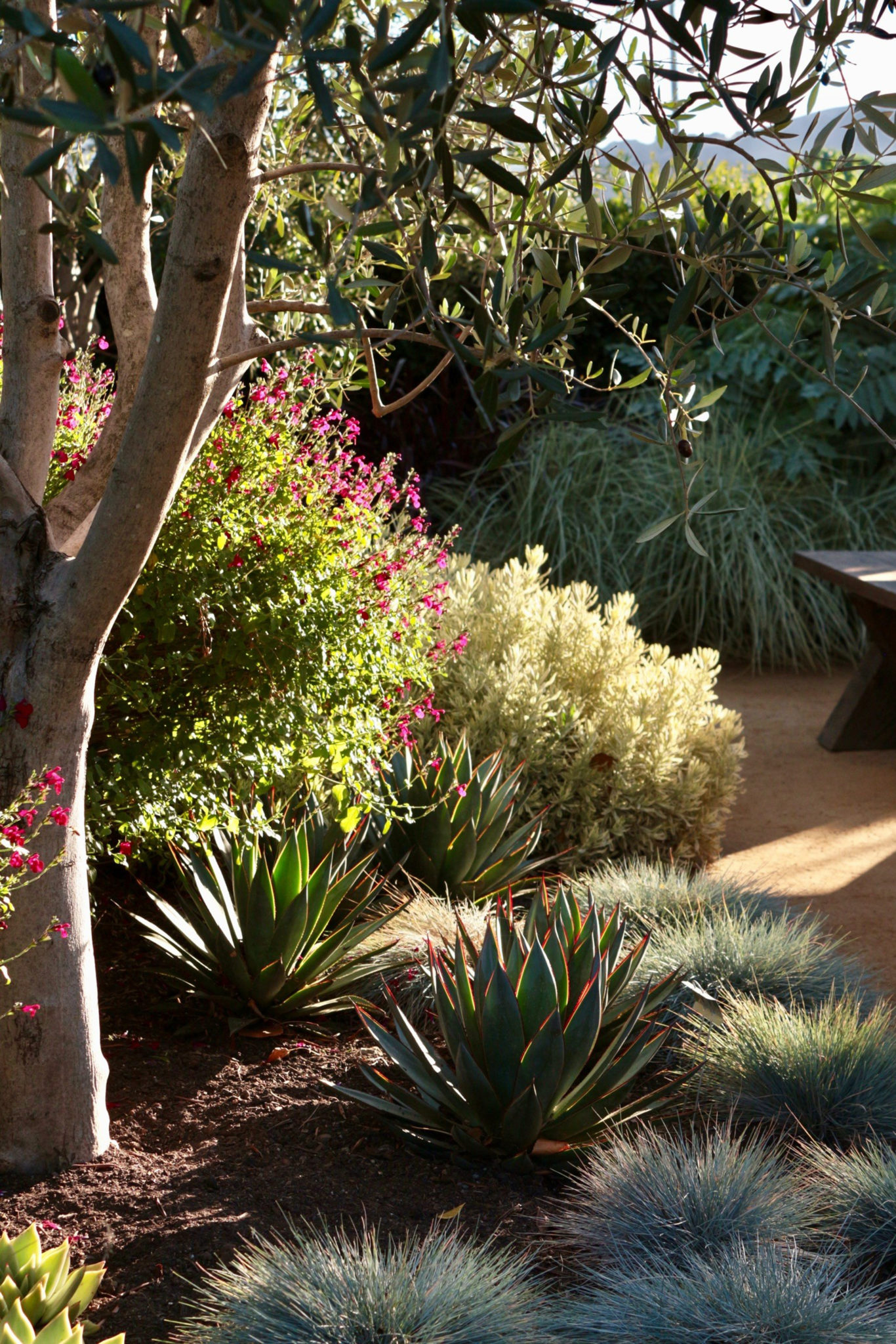
In Cornerstone’s Backyard Orchard, an s-shaped path is lined with some 20 fruit trees that produce crops at different times of the year, from apricots in early summer to apples in fall. Raised produce beds and fruit trellises frame a greenhouse overlooking a field of wildflowers in the Farm area. And, in the Cocktail Garden, a bay laurel hedge serves as a green wall framing the seating area, while its leaves serve as ingredients muddled into drinks.
Recently, Bittner has been getting lots of requests for edible or “kitchen gardens.” Sometimes she has to steer clients away from thinking that they can grow most of their food themselves. “Farming is a full-time job,” she reminds them.
While Cornerstone’s edible gardens do provide a small yield of food, their main purpose is to be inspirational and instructional. But there is now an effort underway to plant more crops in the outer areas of the Cornerstone property, in place of vineyards. The aim with this expansion is to diversify the crops while also providing fresh produce to onsite Folktable, a new restaurant by Top Chef finalist Casey Thompson.
Cornerstone landscape manager Benjamin Godfrey and the property’s lead organic farmer Christopher “Landy” Landercasper are heading up the new effort. The duo will begin offering informative tours of the gardens every Friday at 1 p.m. starting this week.
There are many benefits to mixing decorative and edible elements in your garden design.
“By creating a beautiful space that you want to spend time in, you’ll interact with your plants more,” said Bittner, who likes to blend indoor and outdoor living by creating gardens where clients can “sit next to the harvest” they’ll soon bring into their kitchens.
Bittner offers advice to edible garden novices in The Beautiful Edible Garden (2013 Ten Speed Press), a how-to book that she co-authored with Bay Area landscape artist Leslie Bennett.
Bennett’s Oakland-based firm, Pine House Edible Gardens, designs, installs and maintains edible gardens throughout the greater San Francisco Bay Area. Her work has been featured in Sunset Magazine, Better Homes & Gardens and Martha Stewart Living, among other publications.
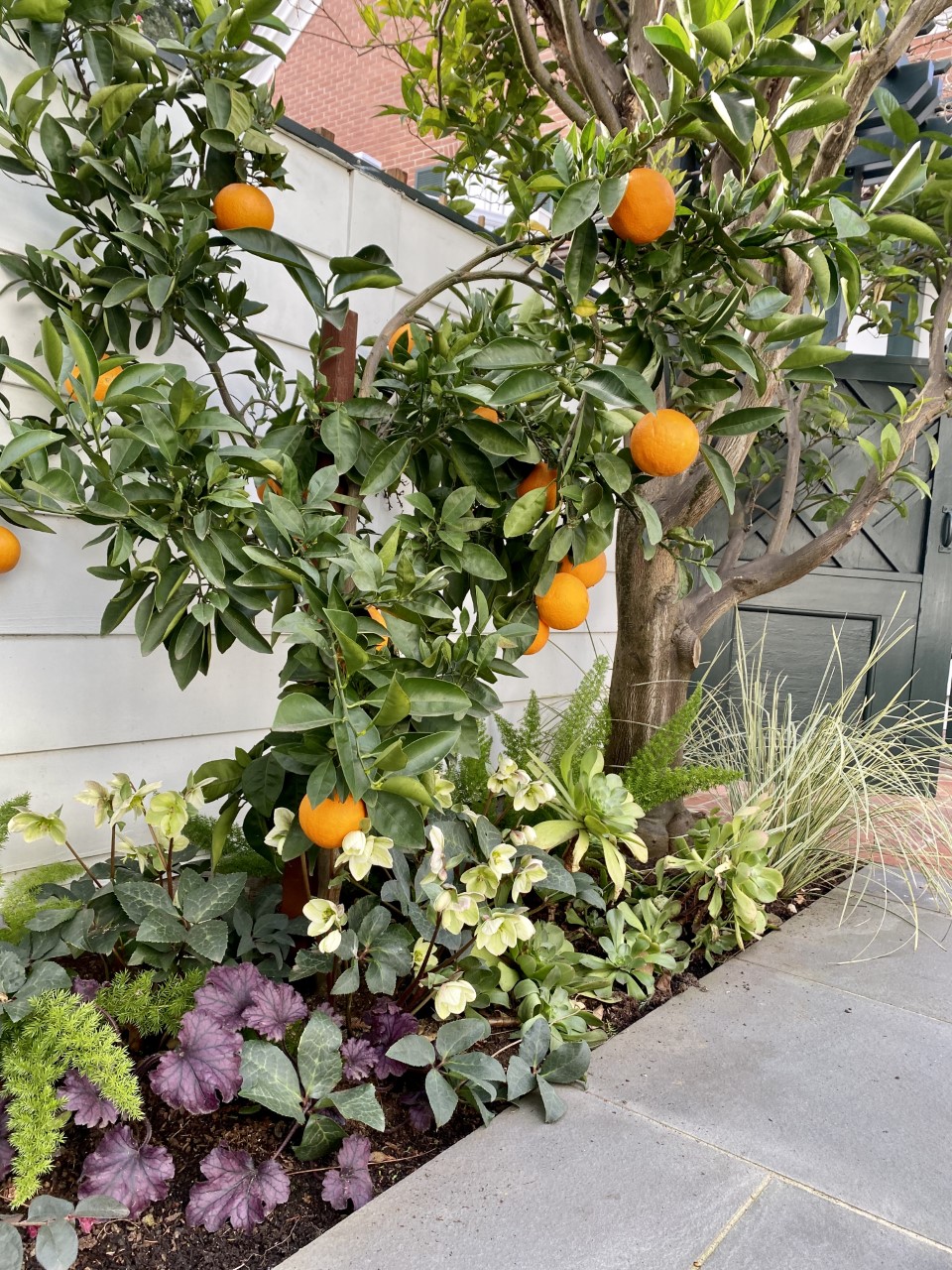
To Bennett, a garden can be “a meaningful and life-impacting space,” which is why she designs each garden with intention and works hard to bring lush green spaces to more people. Since 2018, she has designed and installed a series of low or no-cost gardens for Black women in the East Bay through her project Black Sanctuary Gardens.
“I think the most exciting thing about (small edible gardens) is how much food you can grow,” said Bennett, who enjoys the little bit of extra thought that goes into planning a garden in a small space.
Bennett likes to emphasize the beauty of the plants by contrasting different shapes, textures and colors in her edible garden designs. Bright mustard greens are paired with a dark Swiss chard. Trellised crops, like tomatoes, add height to the design while culinary herbs make for evergreen borders — she likes to let English thyme or oregano cascade over container edges. (She recommends using large containers, and less of them, to help keep the garden space from looking cluttered.)
To add a splash of color during dormant periods, Bennett suggests incorporating prolific producers like citrus trees in large containers, especially the sunny-colored Meyer Lemon. As a filler in those pots, she makes an inspired choice: strawberries!
Sometimes, Bennett will add a few non-edible flowers to frame the food. She currently grows Icelandic poppies in her own garden. Her reason for choosing them is a good one: They make her really happy.
For more information about Black Sanctuary Gardens and to make a donation, click here. Follow on Instagram at @blksanctuarygardens.
Cornerstone Sonoma, 23570 Arnold Dr, Sonoma, 707-933-3010, cornerstonesonoma.com.

Amidst the retail upheaval caused by the pandemic there’s also positive news: new stores are opening in Sonoma County and The Barlow is about to welcome a home decor pop-up shop.
Beginning March 12, San Francisco home goods boutique BaBoo will bring its happy strain of high-style furnishings to the Sebastopol marketplace. After moving from a Pacific Heights location to the San Francisco Design Center, the store has now embarked on a California tour where it will set up several temporary shops.
BaBoo’s first stop on its California tour was Mill Valley. The pop-up shop will remain at The Barlow until May or longer, depending on the response. After that, they have their sights set on quaint Truckee in the Sierras. Then it’s off to Southern California.
The pop-up shop at The Barlow will feature whimsical indoor and outdoor furniture and accessories for the home along with a new collection of fine jewelry and accessories made by artisans from around the world
BaBoo owner Galit Chay is a big fan of The Barlow. She likes the openness of the large white spaces and “the little bits of color” added by the restaurants. She appreciates that the atmosphere is “not too chichi.”
“Sometimes Wine Country can be threatening and people feel like they don’t belong,” she says. “Everybody feels comfortable here (at The Barlow).”
Chay, who is trained in criminal justice and organizational psychology, used to work with at-risk youth in her native Israel. In her spare time, she would make pottery and sculptures to nurture her soul. She knew she wanted to someday work in design.
Maybe seeing life’s challenges up close has influenced the way Chay looks at home decor, as something that should be both beautiful and fun; something that will lift the spirits and reflect who you really are.
“Home is about uncovering yourself,” she says. “The place you can be and do whatever you want.”
BaBoo offers a collection of design pieces that are modern but also playful. This particular blend is Chay’s response to the stark coldness of many ultra modern “museum-style” homes that lack the comfort and warmth she likes to see in a home.
In order to be included in BaBoo’s collection, a design piece needs to spark joy. “I would never bring (home) a piece of art that has some deep, dark meaning. It can be in the museum,” says Chay.
BaBoo’s design pieces have garnered a following. The shop’s felted river rock poufs, for example, provide relaxed seating on one of Sales Force’s “mindfulness floors.” The poufs, which are shaped like river rocks and made by South African fiber designer Ron’el Jordaan, come in different sizes, from one so small it can be held in your hand to large-sized seats. Other popular items include all-rubber poufs with “fur,” stools shaped like animals; even indoor swings.
Chay continues to enjoy meeting and interacting with people in her new role as a design store proprietor. “I love to work with people and talk with people, she says, “They always interest me.” This passion for interpersonal communication and customer service also informs her business philosophy: “I believe in kindness and non-greed,” she says. She will welcome visitors into her pop-up store with world music and chocolates.
BaBoo Pop-up Shop, Suite 130 at The Barlow, 6770 McKinley St., 707-824-5600, baboosf.com, thebarlow.net

In the midst of the horrifying 2017 Tubbs wildfire, restaurateur Sondra Bernstein responded swiftly, bringing food to a community in chaos. She helped San Francisco chefs organize and transport thousands of meals to Sonoma County. She made hundreds of calls to fellow chefs and fired up her own ovens. She worked tirelessly to feed those in need.
The Tubbs fire was just one chapter in Bernstein’s 23-year-career as a restaurateur, which came to a coda (though not yet a conclusion) this week.
In a message to customers on March 1, she announced she would be stepping back from the daily operations of her signature restaurants — girl & the fig, fig cafe, fig rig food truck, the NoodleSpring pop-up (currently closed), her catering company, cookbook projects and other food endeavors. Longtime business partner John Toulze will take over as managing partner.
It’s been a long ride for Bernstein, who launched her fledgling business in Glen Ellen with her brothers and 17 employees, including Toulze, in 1997. At the time, few understood the bounty available through sourcing from local farms, and few restaurants in Wine Country had become gourmet hot spots. She was a pioneer in making Sonoma a must-visit food destination for travelers around the world.
Though she didn’t mention it in her March 1 announcement, Bernstein’s departure comes a few weeks after the girl & the fig restaurant drew national attention and temporarily closed amid furor over a social media post by a former server. The server, Kimi Stout, said on Instagram she had left her job at the restaurant after being told she could no longer wear a Black Lives Matter face covering. The posting sparked a heated debate that drew both anger at and support for Bernstein, Toulze and their staff.
Bernstein, now in her early 60s, said a change in leadership had long been in the works, but COVID-19 put a hold on plans. The restaurant opened a dining area on the Sonoma Plaza last fall, and since March 2020, girl & the fig has served more than 23,000 chef-made meals to local families and seniors facing food insecurity due to the pandemic.
Over the years, Bernstein has served as mentor to 240 staff, reveled in her incomparable Rhone wine selection, launched a podcast and founded the Sonoma FIG Foundation, a nonprofit dedicated to helping aspiring entrepreneurs in farming, food and wine. She will continue to manage the foundation.
The controversy last month may not be the bookend Sondra anticipated at girl & the fig, but it will forever be part of her legacy. Let’s just remember the 23 years of great food, service and local activism that filled the rest of her long, long Sonoma story.
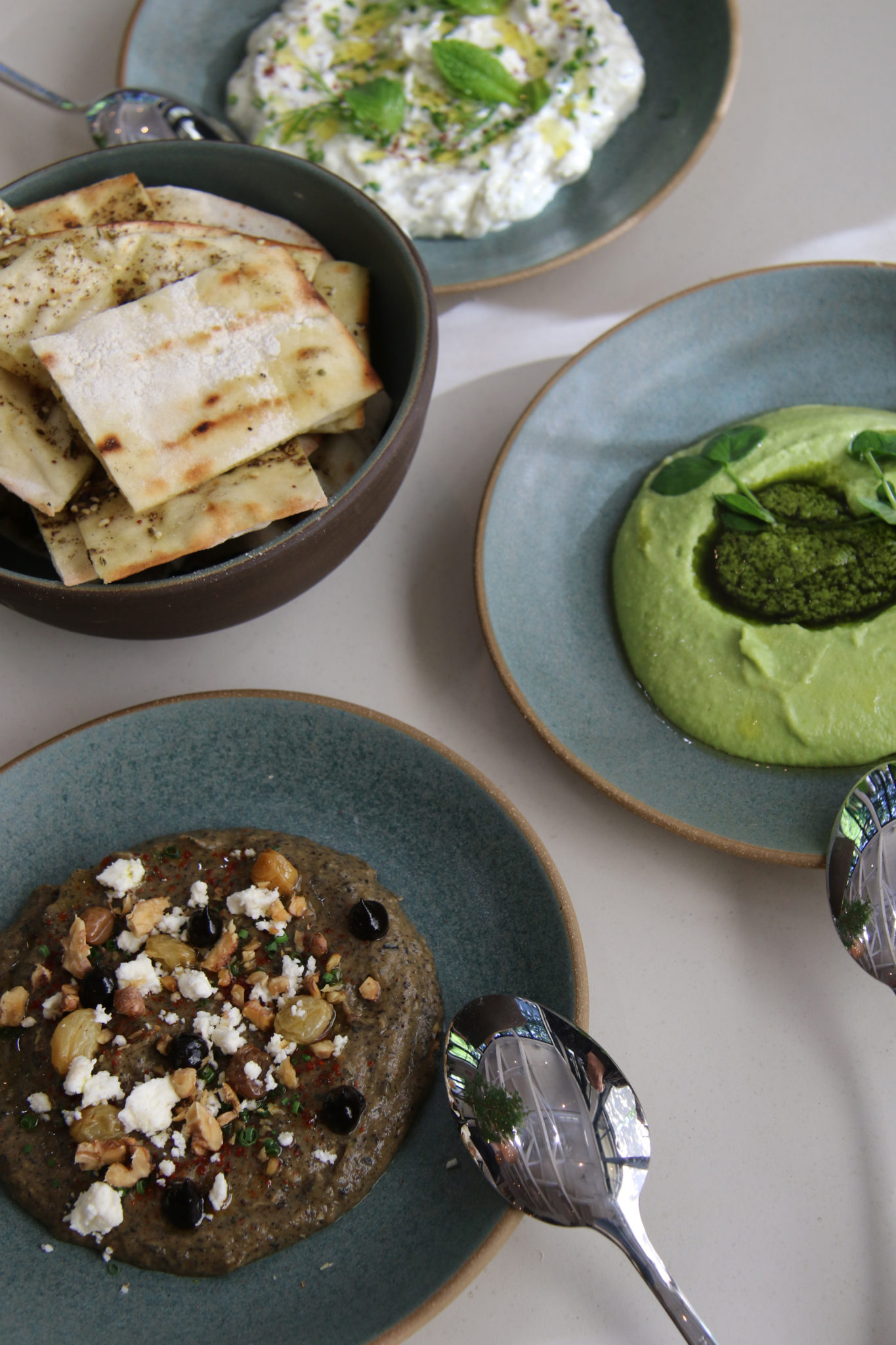
Layla Reopens at MacArthur Place: After months of closure during the pandemic, Layla at MacArthur Place will reopen for outdoor dining with a new spring menu that includes herb-crusted lamb chops, cumin roasted carrots, Dungeness crab salad and pappardelle with local wild mushrooms. 29 E. MacArthur St., Sonoma, 707-938-2929, macarthurplace.com

When Karen Brown went searching for a property in Petaluma where she and a longtime friend might co-invest and coexist, there was nothing on the market that fit the bill. It was 2013, the nation was coming out of a deep recession, and the pickings were slim. So Brown walked the streets of the west side and ended up beating the bushes — literally — to find her dream home.
The lot she came across one day was so overgrown with acacia trees that she almost missed the house. But there, set on a third of an acre, behind a “no trespassing” sign, was a run-down, abandoned cottage, missing its foundation and perched up on temporary piers, with plywood nailed over the doors. Apart from a possum living in the front room, the cottage hadn’t been occupied in at least 10 years.
But the property was large enough for a second small home, and there was something about the forlorn little cottage that tugged at her heart. Brown came to call it “the little house that cried.”
“It was either going to get torn down, or somebody was going to come along at the last minute and love it,” she says. “And that’s what happened.”
As the creative director of an educational nonprofit, Brown could see the possibilities. Her friend Alan Good shared her vision. “There’s an old saying about ‘location, location, location.’ That was really clear,” says Good, a horticulturist who for years managed the living roof of the California Academy of Sciences in Golden Gate Park. “West Petaluma is a wonderful place to live, and the Oak Hill-Brewster neighborhood is one of the nicer parts of Petaluma.”
The property wasn’t for sale. Brown managed to track down the owners, but it took seven months to finalize the deal. Then, collaborating with Petaluma architect Chris Lynch of MAD Architecture, the friends designed and built a compact accessory dwelling for Good. After that, they set to work restoring the original cottage for Brown with architect Brent Russell, starting with a new foundation.
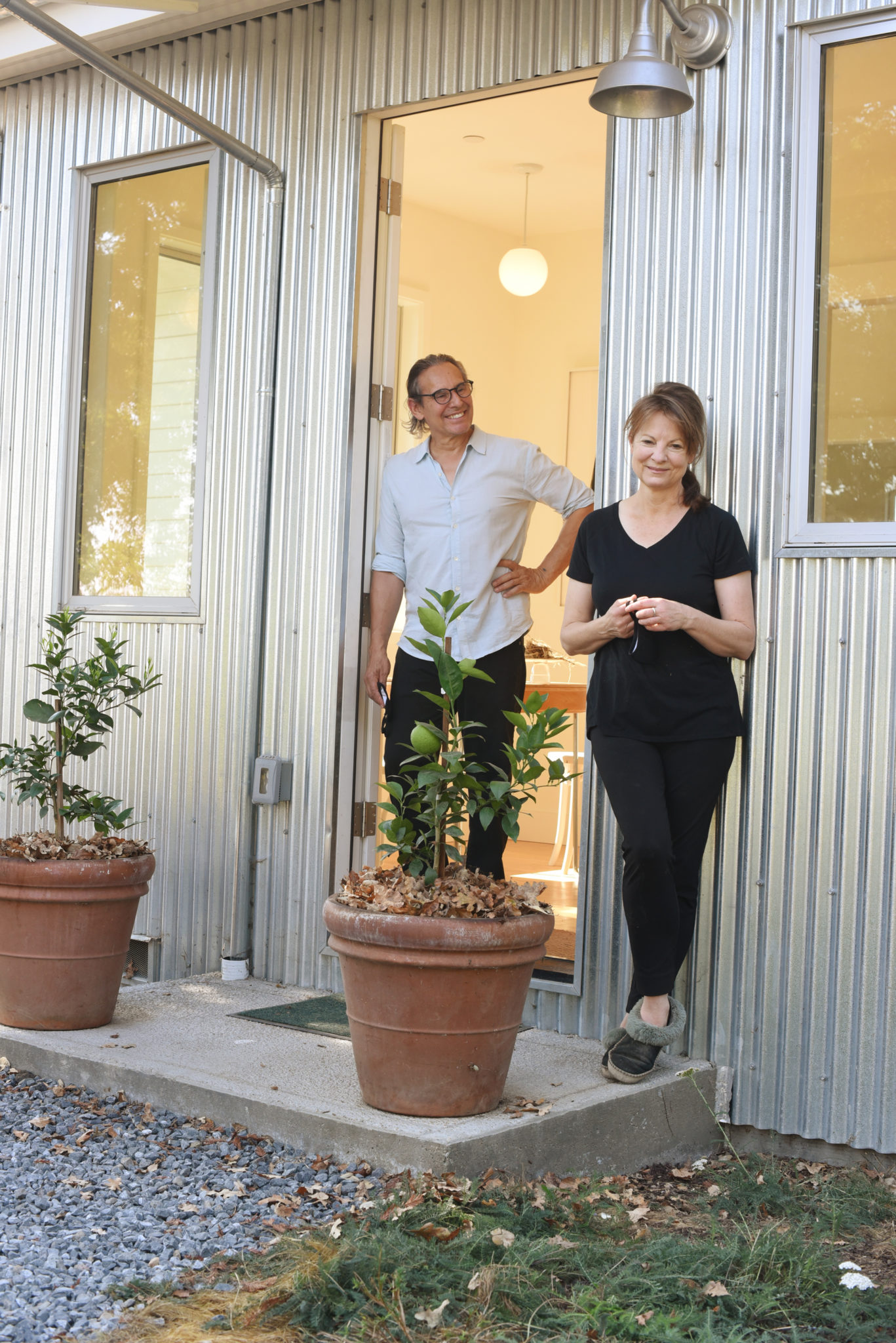
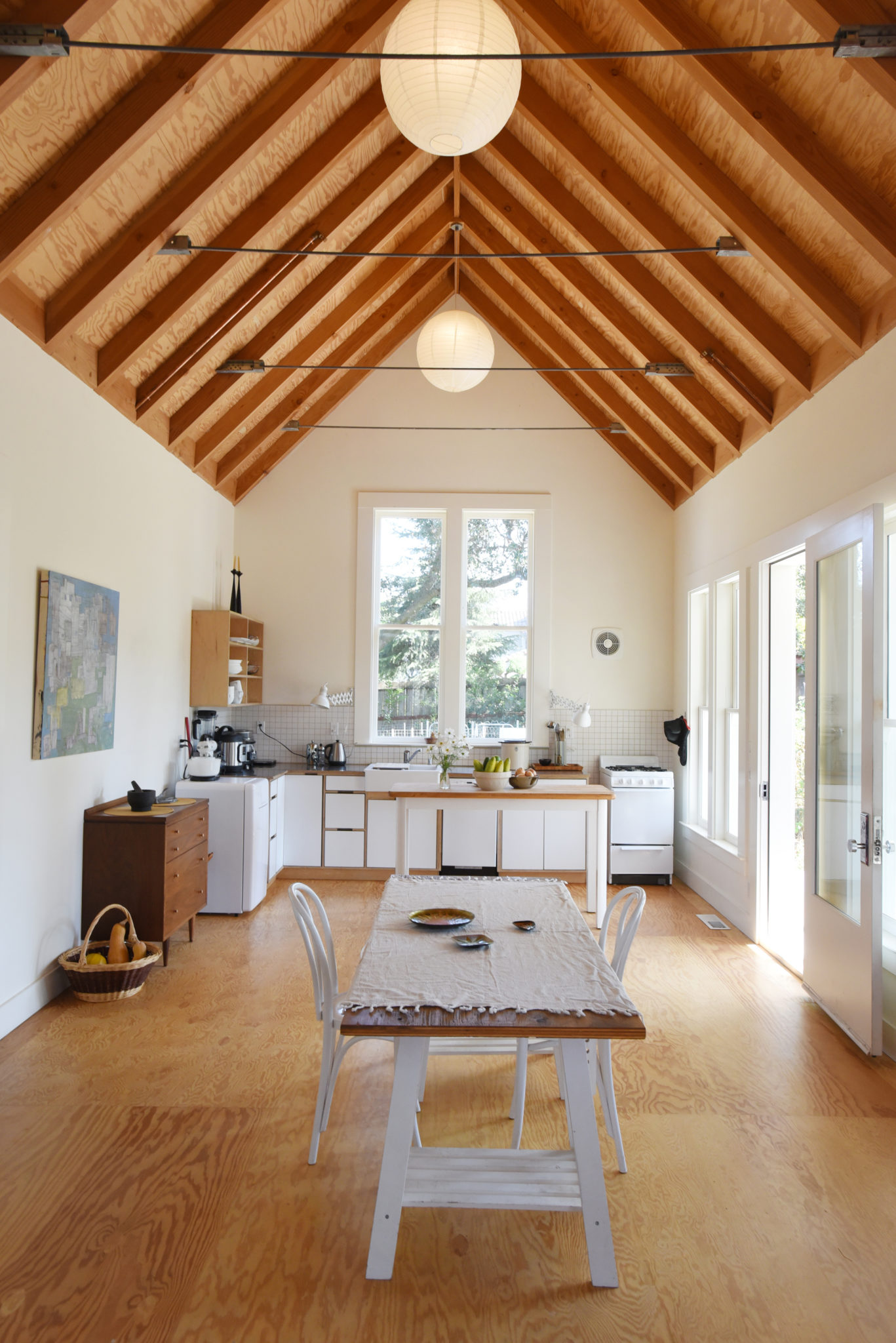
Seven years later, the project is a case study in contemporary downsized living. Rather than building a large home, which could have engulfed the lot, there are two simple white houses designed to fit neatly into the old neighborhood.
Brown’s home in the historic building is about 800 square feet, while Good’s new accessory dwelling is 637 square feet. For their efforts, Brown and Good were granted the highest architectural preservation award by a committee of the Petaluma Museum Association, which praised the project for its “restraint” in staying within the original building’s footprint and maintaining its simple, classic exterior details.
Brown and Good are close friends but not a couple. The plan allows them to live in community while maintaining their own spaces. Both are fans of living in smaller homes. “I think these small structures are so much in the spirit of our heritage in the area,” Brown explains. “This is all we need. We are two friends who bought the property together so we could hand pick our neighbors. And that neighborly spirit also is a part of the heritage of the area.”
There were few architectural details left in the cottage, but Brown and Good saved what they could, including the front door. In reframing the walls, they left the 2-by-2-inch redwood studs in place and added 2-by-4 pieces next to them to meet new codes.
Brown says she’s not certain when the original main house was built. Zillow says 1900. Old wallpaper that they carefully removed from the walls was backed by old newsprint that appears to be from the late 1890s. “There was one original wall left in the house. The other ones we had to replace because of energy requirements,” Brown explains. “But we bought absolutely as close to the original windows as we could get.”
Brown’s house has only one bedroom. Another room, which resembles a walk-in closet but could once have been a child’s sleeping nook, has been set up as her home office. It’s compact, but the 11-foot ceilings and an 8-foot-wide doorway give the interior a feeling of spaciousness. The kitchen was placed where there had once been an outbuilding, so it looks as if it’s always been there. And Brown added a covered porch when she learned from a neighbor that the original home once had one in front.
home, Good also opted for subtle simplicity. He was inspired by some of the historic old ranch cottages at Olompali State Historic Park, just to the south, opting for understated rustic V-siding to fit with the style of the house.
In siting the house, Good did everything possible to preserve the valley and live oaks on the property. “One of the reasons why my house measured 8 feet from the foundation to the trunk of the nearest tree was to make sure it didn’t interrupt the oaks’ existing root zones,” he said. “It’s great. We didn’t have to remove a single tree, and my house is shaded by mature oaks on the hot and sunny west side.”
Inside, the home feels spacious, with a 17-foottall peaked roof, 10 double-hung windows, and a glass-paneled door. “I grew up in an Eichler home in Walnut Creek,” Good says. “I’m comfortable with an open plan where everything opens into one room. And I like lots of light.” In the ceiling, cedar beams support unpainted construction-grade plywood,
with industrial galvanized tie rods instead of wood beams. Outside, a new garage, which they were required to add, is now used by Good as an art studio.
The little compound is working well for the friends. They have a 25-by-65-foot vegetable garden, fruit trees, and laying hens. “We couldn’t have imagined something like Covid,” Brown says, but given the challenge of living through the pandemic, the shared property is perfect. “We’re separate enough that we each have our own homes, but we trust each other, and we’re close enough that we can help each other out. We can socialize and we have a friend.”
RESOURCES
Architect, Good’s home: Chris Lynch MAD Architecture, madarc.com
Architect, Brown’s home: Brent Russell, 707-769-0535
Builder: Scott C. Shelley Construction, scottcshelleyconstruction.com